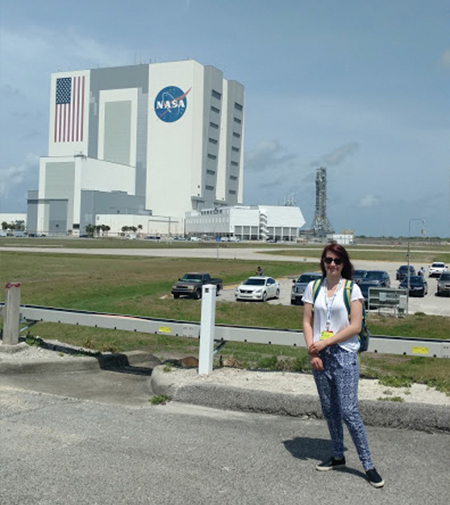From the Launchpad: Witnessing Exoplanet History in the Making
From the Launchpad: Witnessing Exoplanet History in the Making
NASA TESS Launch
There have only been a few years in my life when there have been no humans in space. Sending and bringing home astronauts no longer awes the public as it once did—often major news outlets don’t even cover it. But exoplanets, planets orbiting stars other than our sun, and prospects of finding life outside of our own system—that’s newsworthy. Recently, NASA, the Massachusetts Institute of Technology (MIT), and SpaceX joined forces to launch the next planet-hunting mission, TESS, the Transiting Exoplanet Survey Satellite.
I’m no stranger to the question “Do you think there is other life in the universe?” Right now, we have no evidence to suggest that there is, but the exoplanet community is making progress on answering this question at an unprecedented speed. Just twenty years ago, we did not know exoplanets existed. Now over three thousand have been confirmed by the Kepler Space Telescope alone. The Kepler Space Telescope observed only a small portion (~10%) of the sky, while TESS will look at nearly all of it. Both Kepler and TESS search for planets by observing what is known as a transit, which is a slight dip in the brightness of a star as a planet passes in front of the star along our line of sight.
As an exoplanet enthusiast, I couldn’t miss the opportunity to see TESS launch on SpaceX’s Falcon 9 rocket. I applied and was selected to attend as part of the NASA Social program. The NASA Social program is an opportunity for anybody with social media accounts to learn and share information about NASA missions, people, and programs. I was truly honored to have been chosen for this competitive program.NASA Social arranged two days of activities for its TESS launch participants. On the first day, we attended a NASA briefing and heard from exoplanet scientists, including Dr. Elisa Quintana and Dr. Jessie Christiansen. The event was live-streamed on NASA TV. Being a part of the NASA Social program was like being part of the press. As someone trained in astrophysics, I found it very difficult to ask not-too-technical questions when talking to our guest speakers. Most people in the group of participants I was with did not have scientific backgrounds so I felt it necessary to ask questions that everybody in the room would understand.
After the briefing, I visited the Kennedy Space Center (KSC) Visitors Complex. I walked around the center with a friend, whom I met at NASA over a summer internship, and her family. I had been to KSC before, but it was a lot of fun walking around with my friend’s five-year-old daughter, watching her face light up as we saw the real Atlantis Space Shuttle and a life-size replica of the Hubble Space Telescope. “I’ve never seen her so excited about science before,” my friend told me about her daughter. It is difficult to understand the scale of astronomy, especially as a child, but being able to see the Hubble Space Telescope replica and the actual retired Atlantis shuttle was clearly awe-inspiring.

